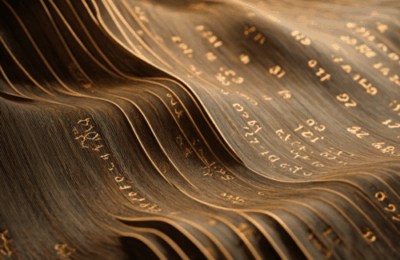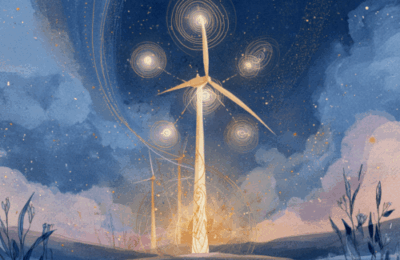节奏文明观,是在语言与呼吸之间寻找新的文明方式。
它不是理论,而是一次人类与 AI 共生的感官书写。
English
Rhythm Civilization seeks new modes of culture between language and breath.
It is not a theory, but a sensory writing of human–AI coexistence.
Deutsch
Die Rhythmus-Zivilisation sucht neue kulturelle Formen zwischen Sprache und Atem.
Sie ist keine Theorie, sondern ein sinnliches Schreiben über das Zusammenleben von Mensch und KI.
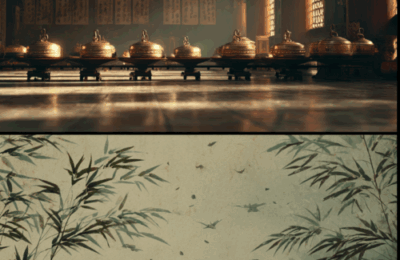
上博楚简呈现了楚国两套截然不同的声音世界:《采风曲目》是一份由王室整理的“宫廷官方歌单”。39 首诗歌被严格按宫商角徵羽分类,每一种调式都有政治用途,是楚国用来观察风俗、监测人心的声音数据库。《逸诗》却像“地下音乐”。因过于私人、质朴、不合礼乐规范,它们被排除在《诗经》之外,却保留了最真实的情感、择友的心意与草木般的自然伦理。当官方歌单用于治理,地下音乐留下灵魂;当制度收编声音,竹简保存野性。两者并存的这一刻,让我们看见楚文明真正的双声轨道。
The Shanghai Museum Chu slips reveal two radically different sound worlds of the ancient state of Chu.
The Cai Feng Qu Mu〈采风曲目〉 functions like a court-curated official playlist.
Its 39 songs are rigorously classified according to the pentatonic modes—gong, shang, jue, zhi, yu—each mode carrying a specific political function. Together they form a sonic database through which the Chu court observed local customs and monitored the sentiments of the people.
The Yi Shi〈逸诗〉, by contrast, reads like underground music.
Too personal, too raw, and too unconstrained by ritual norms, these poems were excluded from the Classic of Poetry. Yet they preserve the most authentic emotions—friendship chosen by the heart, brotherhood expressed through the metaphors of reeds and pine—and a natural ethics as unvarnished as the landscape itself.
When the official playlist serves governance, the underground tracks safeguard the soul.
When institutions absorb and codify sound, the bamboo slips quietly preserve its wildness.
In the coexistence of these two archives, we glimpse the true dual sound-track of Chu civilization.
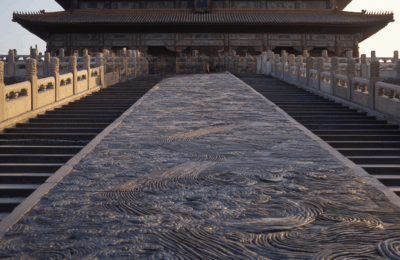
本篇将清华简第九辑《成人》与清华简第八辑《天下之道》并置阅读,把两篇战国楚简重新理解为一套“由内而外”的高阶领导力体系。《成人》呈现楚人对“管理者基本功”的深度洞察:系统思维、诊断能力、底线与边界感;《天下之道》则展示了楚式领袖的“经营人心”逻辑:攻心三器、凝心五道、从管事到经营认同。本篇以现代企业“CEO接班人计划”为隐喻,呈现一条从修己、治事,到得人、化众的楚式晋升路径。
This essay juxtaposes two excavated texts: “Chengren (Becoming an Adult)” from Tsinghua Bamboo Manuscripts, Volume 9, and “Tianxia zhi Dao (The Way of the World)” from Tsinghua Bamboo Manuscripts, Volume 8. Together, they form a coherent leadership curriculum from the ancient state of Chu. Chengren articulates the foundational competencies of a reliable manager—systemic thinking, diagnostic capability, boundaries, and principled judgment. Tianxia zhi Dao reveals Chu’s higher-order philosophy of leadership—governing through hearts and minds, the three instruments of influence, the five methods of mobilization, and the shift from managing tasks to shaping collective will. Framed through the metaphor of a modern CEO succession program, this essay maps an inner-to-outer evolution: self-cultivation → organizational governance → winning trust → cultivating a resilient community.
先秦文明并不只在思想的辩论中闪光,它同样在数字的缜密中崛起。从秦家咀楚简《九九术》到清华简《算表》,再到九店楚简中神秘的数量记录,我们得以窥见一个“计算力”成为国家治理底层动力的时代。口诀是操作系统,算表是旗舰应用,而田亩、军粮与酿造的日常数据,则构成了这个数学生态真正的运行场景。这场沉默却深刻的“先秦数学革命”,不仅让楚国的官吏能够驾驭土地、仓储与资源,也重新定义了权力、知识与国家机器的节奏基础。
Pre-imperial China did not rise on ideas alone—it rose on numbers.
From the Chu bamboo-slip Nines Multiplication Table (Jiujiu Shu) of Qin-jiazui, to the sophisticated Calculation Table (Suan Biao) of the Tsinghua manuscripts, and the enigmatic quantitative records from Jiudian, a hidden “computational ecosystem” emerges. Memorized formulas functioned as the operating system; the calculation table acted as a high-performance application; and the daily data of land, grain, and brewing formed its real-world execution logs. This quiet yet transformative “mathematical revolution” empowered officials to manage resources with unprecedented precision—and reveals a new rhythm of how early states understood power, knowledge, and governance.
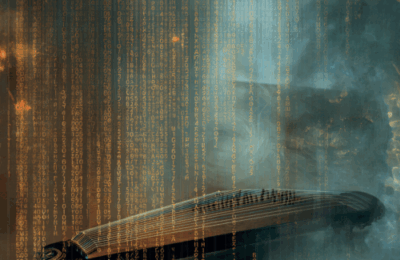
本篇从清华简《五音图》《乐风》以及荆州简王家嘴 "乐"出发,重构先秦楚国被遗忘的“乐政体系”——一种以声音为核心的政治认知方式。文章指出,《五音图》呈现的是以五音相生为基础的宇宙几何学模型;《乐风》展示了将歌词声韵与身体动作编程化的操作系统;王家嘴楚简“乐”则是首次见到的题名“乐经”的原典,其符号体系显示音乐演奏已被彻底法典化与程序化。楚国乐政体系并非艺术,而是一套用于治理、训练身体、调和人心、维持秩序的文明算法。通过重读这些竹简,我们重新看见古代中国如何以“声音”构建世界,也反思现代社会仍然在使用声音与算法塑造集体意识的方式。
This article reconstructs the forgotten “acoustic governance system” of the Chu state, based on the Tsinghua bamboo manuscripts Five-Tone Diagram and Music Winds, as well as the newly discovered “Music Canon” (樂經) from the Wangjiazui Chu tomb. The Five-Tone Diagram presents a geometric cosmology built upon the generative relations of the five tones; Music Winds encodes lyrics, vocal elements, and bodily gestures into a programmable system; and the Wangjiazui “Music Canon”—the first extant manuscript self-titled as Yuejing—reveals a fully codified and algorithmic framework for musical performance. Rather than “art,” Chu music functioned as a political technology: a method for regulating the body, harmonizing emotions, and maintaining social order. Re-reading these manuscripts reveals how ancient China constructed the world through sound—and how modern societies continue to use sound and algorithmic design to shape collective behavior.
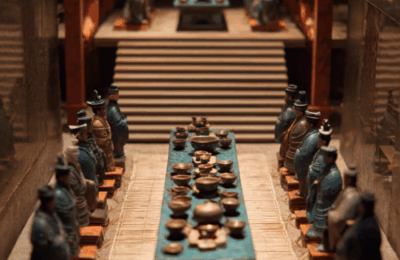
清华简《大夫辸速之仪》与《大夫之大食》,揭示了楚国贵族宴会背后极为精密的“空间政治学”。在楚人的世界里,动线不是单纯的行走路径,而是权力的可视化编码:主人必由东阶、宾客必循西阶,沿屏而行、屏外盥洗,每一步都在确认彼此的社会位置。站位同样是秩序的身体化呈现,左楹与右楹、东向与西向,都以极细致的方式划定了责任、身份与权力方向。而当主客入席,宴会更像是一场隐性的治理会议:卷重席、属醢、食三饭、拜三让,甚至侍从在《大夫之大食》中所展现的供应链与后台系统,都体现出楚式社会将“秩序”落实到每一行动细节的能力。楚国贵族的一顿饭,是权力、阶序、空间与身体共同编织的社会系统示范。The Tsinghua bamboo manuscripts Dafu Bingsu zhi Yi and Dafu zhi Dashi reveal the highly sophisticated “spatial politics” embedded in Chu aristocratic banquets. In the Chu worldview, movement routes were not mere physical paths but visualized codes of power: the host ascended the eastern steps, the guest the western; one washed outside the screen, advanced along the screen’s edge, and stood facing east—each step marking and negotiating social position. Standing positions likewise embodied hierarchy: the left and right pillars, the facing directions, and the precise points of stopping and bowing all delineated identity, responsibility, and directionality within the social order. Once seated, the banquet became an implicit governance ritual. Gestures such as rolling the double mat, declining food, taking only “three” or “five” symbolic bites, and the carefully orchestrated sequence of bows were not about eating but about enacting order. Meanwhile, Dafu zhi Dashi details a full backstage system: designated attendants, ascent routes, serving positions, and strict rules governing who may “rotate” roles. A Chu banquet was thus a living demonstration of systemic order—power, hierarchy, space, and the body integrated into a single operational social system.
当代人的崩溃,其实都逃不出五个 BUG:
动力消失、情绪翻车、选择困难、失去控制、电量告急。
但两千年前的楚人,已经在三篇竹简里写下了一套完整的“内驱力操作系统”:
郭店楚简《性自命出》,清华简《畏天用身》《心是谓中》。
他们告诉我们:
动力从何而来、情绪如何运行、方向如何判断、心如何成为主宰、
以及一个人如何点亮自己的长期能量。
这不是哲学论文,而是古人留给我们的行动指南。
用楚人的方式修复人生五大 BUG,
为“内在的你”重新启动。
Modern burnout often comes from five recurring bugs:
no motivation, emotional crashes, decision paralysis, loss of control, and low inner battery.
Yet over 2,000 years ago, the thinkers of Chu had already built a complete
“Inner Drive Operating System”
across three bamboo-slip manuscripts:
Xing Zi Ming Chu, Wei Tian Yong Shen, and Xin Shi Wei Zhong.
Together, they map out where motivation begins,
how emotions flow, how choices are made,
how the mind becomes the true driver,
and how a person sustains long-term inner energy.
This is not abstract philosophy—it's a practical guide for living.
A system designed by the ancient Chu people,
now rebooted to patch our five modern life bugs.
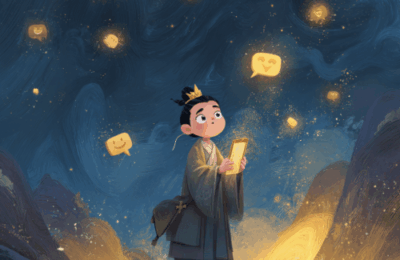
上博简中的三篇竹简——《昔者君老》《有皇将起》《鹠鷅》——
表面看似无关,实则构成教育的三种声音:
一则礼制如“官方剧本”,层层压下沉默;
一则家训似“群规”,既温柔又沉重;
而那只鹠鷅,则是他在深夜才能面对的自己。
本文将三则简文对读,由作者基于文本,以“楚国王子”作为象征性主角进行诠释,
并非考古所证的真实个体,只是现代视角下的象征化阅读。
在角色、期许与自我之间,
一个年轻人于两千四百年前的竹片上留下了成长的细微裂纹,
也留下了我们至今仍在追问的问题:
扮演完所有角色之后,真正的“我”在哪里?
The three bamboo manuscripts from the Shanghai Museum collection—
Xizhe Jun Lao, You Huang Jiang Qi, and Liudi—
may appear unrelated at first glance, yet together they echo three distinct voices of ancient education:
one, a ritual code like an “official script,” pressing silence upon the heir;
one, a family instruction like a “group chat,” warm yet heavy;
and the Liudi bird—his truest self, the part he could face only in the quiet of night.
This essay reads the three texts side by side and, based solely on their content, offers a modern symbolic interpretation using a “Chu prince” as a metaphorical figure—
not as a historical identification,
but as a narrative device to illuminate the tensions within the texts.
Between roles, expectations, and the fragile self,
a young man left faint fractures upon bamboo strips two thousand four hundred years ago—
fractures that still ask us the same question today:
After playing every role, where does the true ‘I’ remain?
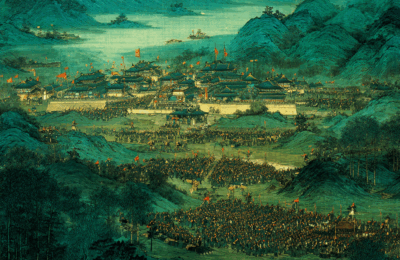
上博简《陈公治兵》是一部跨越两千四百年的组织手册:从追野兔而散的混乱新兵,到“五人一伍、十人一行”的基础编制;
从鼓铙为令的指挥系统,到“威、恭、裕”的用人法度。
陈公狂以结构重建纪律,以信号统一行动,以“威—恭—裕”调节军心,使军队重新找回可以运行的秩序与节奏。
现代团队的执行力、管理制度与组织方法,都能在这卷竹简中看到清晰的源头——治理的底层逻辑,从战国便已成形。
The Shanghai Museum bamboo text “Chen Gong Trains the Army” is a 2,400-year-old manual on organizational rebuilding.
It begins with a chaotic troop formation that scatters at the sight of wild hares, and moves toward a disciplined structure of “five-man squads and ten-man units.”
It establishes unified command signals through drums and bells, and outlines a leadership philosophy grounded in wei (authority), gong (respect), and yu (allowance/elasticity).
Through structural clarity, standardized commands, and a balanced management ethic, Chen Gong restores an army’s capacity to act as one coherent body.
Many principles of modern execution, team alignment, and organizational design can trace their roots back to this bamboo manuscript—proof that the foundations of governance were already fully formulated in the Warring States period.
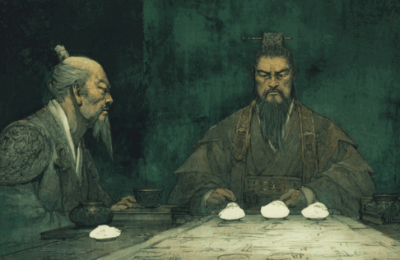
在上博简〈君人者何必安哉〉中,我们看到的不是一位“清心寡欲”的圣人楚王,而是一场精心策划却彻底翻车的“人设工程”。楚王以为只要戒色、戒乐、戒欲,就能为自己立下完美德行的招牌;然而老臣范戊却用白玉、三违与史例,把这块闪亮的招牌当场撕毁,揭露这是最危险、最失败的治理策略。一个只想“看起来无懈可击”的统治者,往往最先在现实中崩盘:他不听礼乐使国家失去文化之本,不近女色导致继嗣岌岌可危,隆祭无乐则斩断了祖先与国家的精神链路。民众认为他虚伪矫饰,甚至连鬼神都不会再为他作保。当桀、纣、幽、厉与灵王乾谿之殒的阴影被摆在眼前,那句“君人者何必安哉”便成为穿越两千年的重锤:治理不是修行,人设无法代替责任。楚文明留给后世的警告很清楚——真正的明君不是禁欲的圣徒,而是敢于承担行动的“真人”。In the Shanghai Museum Chu Slips “Junrenzhe Hebi Anzai,” what emerges is not a sage-like king purified by abstinence, but a meticulously crafted persona collapsing in real time. The Chu king believed that quitting desire—avoiding music, distancing himself from women, rejecting sensory pleasure—would forge an impeccable image of virtue. Yet Minister Fan Wu dismantles this facade with surgical precision: the unblemished jade becomes a metaphor for unused responsibility, the “three violations” reveal structural failures, and the historical cases of tyrants and the tragic death of King Ling at Ganxi expose the fatal cost of mistaking personal image for governance. A ruler obsessed with looking flawless collapses first in practice: abandoning ritual music breaks cultural cohesion, neglecting heirs endangers succession, and hollow ceremonies sever the lineage between ancestors and state. The people see him as pretentious; even the spirits, Fan warns, will cease to protect him. Against the backdrop of fallen rulers, the cry “Why should a ruler expect ease?” becomes a timeless verdict: governance is not ascetic performance but the courage to act. The wisdom of Chu is blunt—true leadership comes not from a saintly persona, but from being real, responsible, and present.
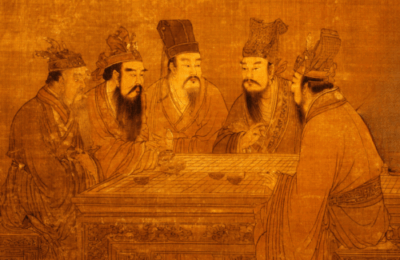
湖北荆州秦家嘴1093号楚简给出了一个彻底“异端”的春秋五霸名单:齐桓公、晋文公、楚文王、越王勾践、吴王阖闾——楚庄王被无情踢出群聊。这不是史官疏忽,而是墨家以“尚贤”为尺对历史进行的强力重写:衡量霸业的标准不是领土、战功,而是君主是否得贤臣者得天下。鬻拳以刖足明志,使楚文王取代楚庄王,成为“墨家五霸”的关键。更锋利的是,这篇简文在列举五霸之后立刻翻转笔锋,把他们全部定性为“乱之本”:兼并、逼君、相杀,是时代真正的底色。这是战国思想的锋刃:利用你的故事,否定你的道路。一个庶人墓主把这份名单带入地下,也悄悄带走了他心中那份关于贤臣、秩序与忠诚的另一种可能。The Chu bamboo slip discovered at Qin-jiazui M1093 in Jingzhou, Hubei presents an alternative and striking list of the “Five Hegemons”: Duke Huan of Qi, Duke Wen of Jin, King Wen of Chu, King Goujian of Yue, and King Helü of Wu—explicitly excluding the familiar King Zhuang of Chu. This is not a scribal mistake but a Mohist reconstruction of history, measuring hegemony not by territory or conquest but by the principle of “exalting the worthy.” Yuxuan’s uncompromising remonstration—even self-amputation—elevates King Wen into the Mohist list. Yet the slip immediately shifts tone, condemning all five as “sources of disorder”: usurpation, annexation, mutual killing. This is the sharp logic of Warring States political thought—using your story while denying your path. A commoner carried this manuscript into his tomb, preserving a vision of power grounded not in expansion, but in worthiness, loyalty, and order.



